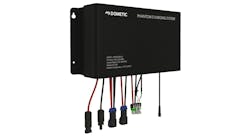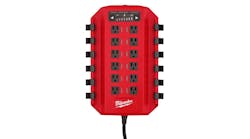The complex connections of systems in fleet vehicles can create a complicated diagnosis process, with electrical systems being especially time consuming. Equipping a shop with a professional scan tool will help to identify electrical issues faster and get trucks back on the road.
To ensure you select the best scan tool for your shop, start by assessing the features you need for your fleet and decide what capabilities will best aid your technicians. That’s the advice from Duane “Doc” Watson, field sales technical trainer, Bosch Automotive Service Solutions.
In North America, the Automotive Service Solutions Business Unit (www.boschdiagnostics.com) of Bosch’s Automotive Aftermarket business division supplies aftermarket and repair shops with a range of vehicle repair solutions. This includes testing and repair-shop technology, shop equipment, specialty tools, diagnostic software, electric vehicle charging stations, dealership service programs and service training and information under the Bosch, OTC and Robinair brands.
Coverage
“If technicians are troubleshooting trucks and systems from different manufacturers, consider an aftermarket scan tool with all makes/models coverage,” he recommends. “An all makes tool will allow your technicians to move between more vehicles using a familiar tool, saving time.
“An aftermarket tool will also communicate with most modules on the truck, not just one manufacturer’s components, like an OEM tool,” continues Watson. “Technicians can use the same scanner to read codes, control and diagnose engines, transmissions, trailers, brake systems and more.”
Work at the Truck
On-tool repair assets can save time and keep technicians at the vehicle to diagnose, test and repair, Bosch’s Watson says. For example, features like interactive wiring diagrams, likely repairs, component location and tolerance specs – which are included on the Bosch 3824 ESI [truck] heavy duty professional scan tool – can prevent a technician from searching for info on a laptop or manual and make them more efficient.
When you demo a tool, check the functionality of the special tests, he suggests. Some tools include step-by-step instructions on how to perform the tests and include what technicians should observe.
“More information is better than less, especially when diagnosing complex electrical systems.”
Recording Capabilities
Diagnosing electrical faults goes beyond scanning a vehicle and testing a part, notes Watson.
“Technicians may need to complete several drive cycles to replicate an issue, closely watching how multiple vehicle systems perform,” Watson says “Long-term data recording will help techs track lingering issues. Saving and comparing the recordings can identify trends that can lead to a permanent repair.”
In addition to recording data, technicians will need access to live data and data graphing during diagnostic testing, he adds. While conducting system checks and other troubleshooting efforts, the ability to simultaneously watch the live data stream allows the technician to better locate the source of the issue.
Ask your technicians what kind of graphing they prefer and how many PIDs (sensor data, system status, etc.) they need to see at the same time. Before you invest in a new tool, make sure it shows data in a way your technicians expect and can understand.
Software Updates
Coverage updates are the most important part of a diagnostic tool.
“Any tool you purchase should have updates available at least twice a year to stay current and repair newer vehicles,” recommends Watson of Bosch. “Repair asset subscriptions are another way to give techs more information on vehicle issues to make diagnosing and repairing faster.”



